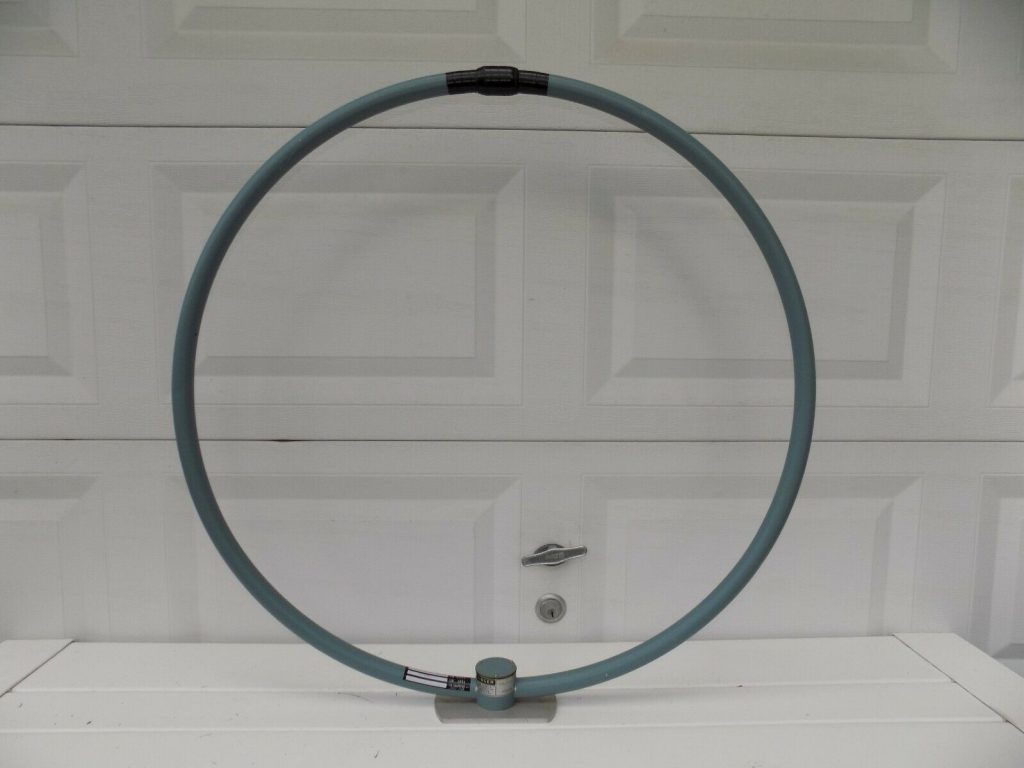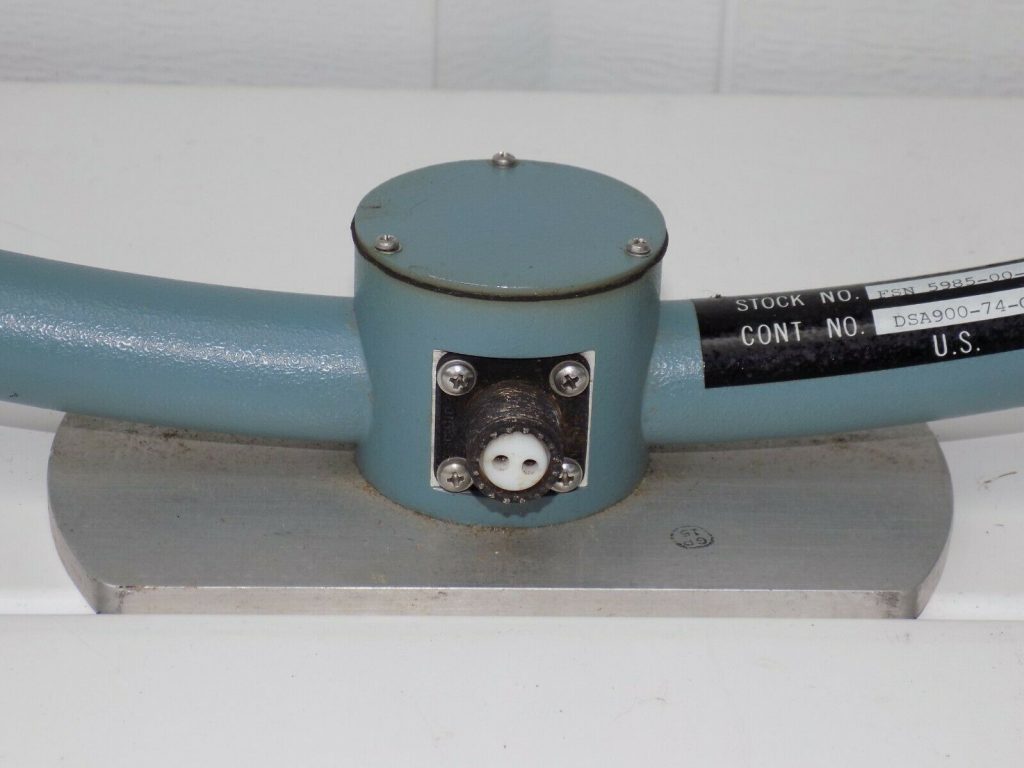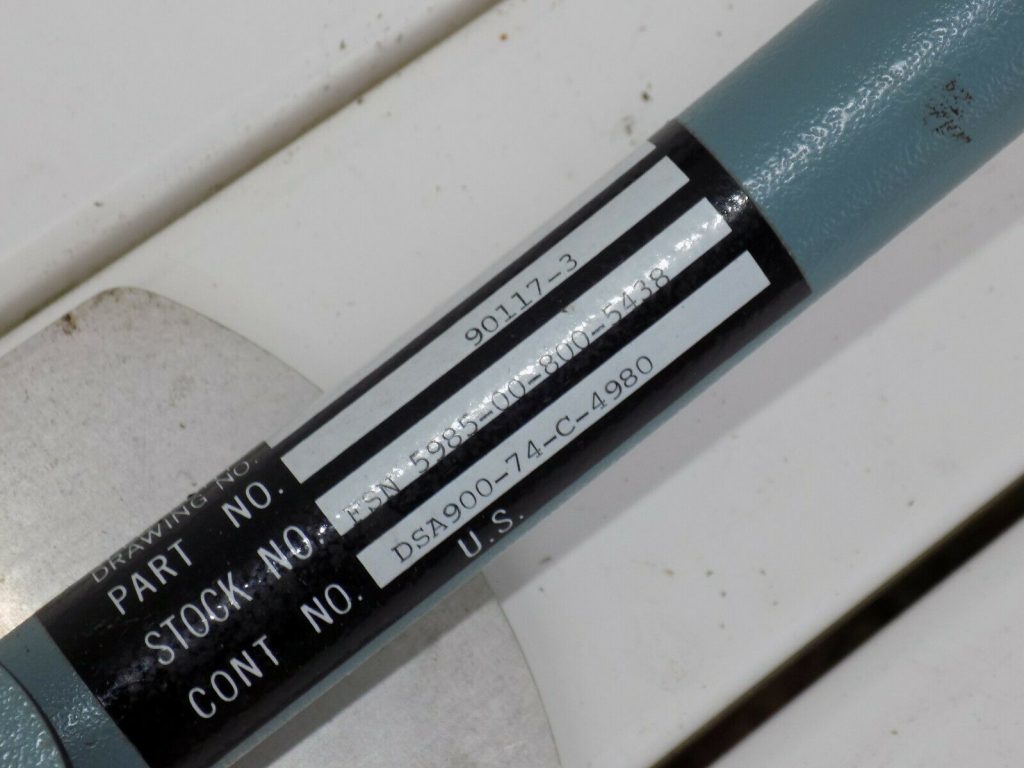Many thanks to SWLing Post contributor, Dan Robinson, who shares a link to this 31″ Singer Eaton loop antenna found on eBay.
The seller knows nothing about this antenna, but did provide some detailed photos of the connector and product information sticker:
This loop obviously came from US government inventory based on the sticker. It looks to be quite robust and sports one of the balanced antenna connectors found on rigs like the Hammarlund SP-600. I’m guessing this loop might be fixed-frequency as I see no tuning section with a variable capacitor.
Can any SWLing Post readers shed a little light on this loop? Have you ever used one? Please comment!




These antennas generally make poor antennas. I have access to a number of EMC loops all from Rohde. TESEQ, ETS Lindgren and Emco. They have one excellent characteristic. That is that they have a flat antenna factor especially when sold with a calibration certificate. Most of the ones on ebay have no calibration data, have blown preamps, custom parts that not available, the preamps have poor dynamic range, are very noisy and generally make very poor antennas. They were designed for 1 thing that is to make field strength emc measurements that is precise. They make poor listening antennas and most of homebrew loops or antennas like the Wellbrook outperform them in terms of detecting signals below ITU R rural quiet levels. The noise floor of these untuned loops and even the ones with a preamp are well above very noise environments. You be able to even detect the noise that offends most SWL listners and hams because these antennas are so noisy have a high preamp noise floor. The worst part about these antennas are that they all over priced garbage really without a calibration certificate and not worth the money. You can homebrew a better loop than these EMC loop antennas that will detect weak signals far better.
They were used on the GWEN project.
I have a complete one with preselected and tripod.
These loops were used for LF E field measurement in EMC Labs back in the day. Singer-Stoddart produced manually tuned EMI measuring receivers.
Full specs are available on the web. Probably 30+ years old
Interesting a Twinax connector that is an obsolete but very good RF connector. They were used on Radios like the R390A/URR. The male counter part the RS-R21 connector is readily available.
Good luck using a PL-259 connector with the thing!
If it’s the one I think it should have a balanced impedance of 95Ohms, so one will probably need a transformer to use it, plus, as “13dka” pointed out, that antenna was built to work in the 30Hz to 10Khz range … so I’m not sure how much it may be useful with a “regular” receiver 🙂 Anyhow, the antenna part number matches loop antennas built under several brands; AILTECH, EATON, SINGER, TEGAM; also, seeking around, found an alternative part number for that 90117-3, here
https://www.veritableaviation.com/nsn/nsn-parts/5985008005438/
The part and NSN numbers indicate that this is one of the accessory antennas for the Stoddart Aircraft Radio NM-40A ELF/VLF field intensity meter/receiver or a follow-up design. That would mean it was built for 30Hz(!)-15kHz and contains 11 wire windings inside the shield loop.
The loop can be seen further down this page:
http://online.sfsu.edu/hl/src.html
I’d probably want to check this part with a Geiger counter tho, this .pdf describes how 3 of those loops were used in a Canadian EMP nuke test setup 🙂 :
https://apps.dtic.mil/dtic/tr/fulltext/u2/410368.pdf